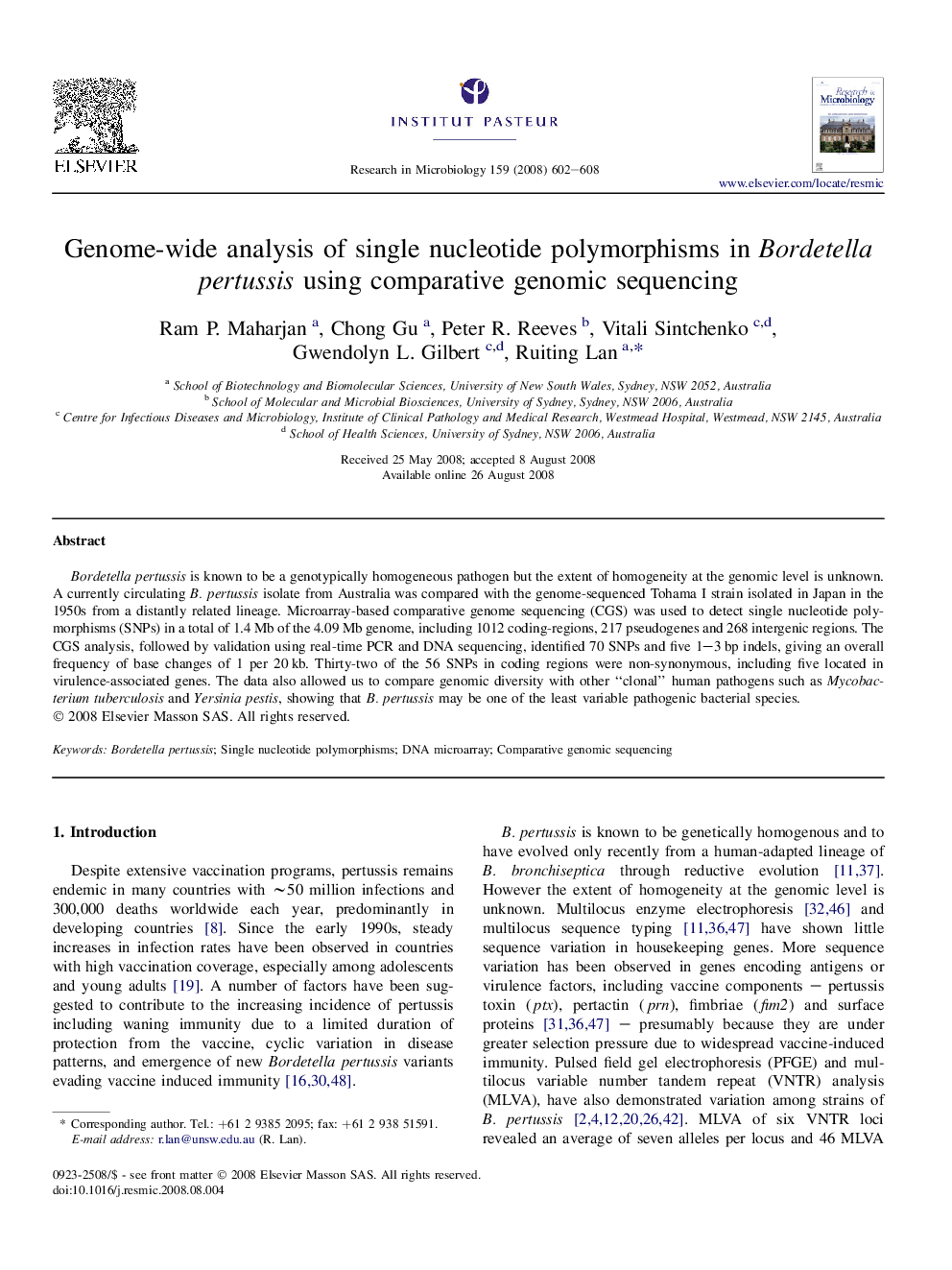| Article ID | Journal | Published Year | Pages | File Type |
|---|---|---|---|---|
| 6288195 | Research in Microbiology | 2008 | 7 Pages |
Bordetella pertussis is known to be a genotypically homogeneous pathogen but the extent of homogeneity at the genomic level is unknown. AÂ currently circulating B. pertussis isolate from Australia was compared with the genome-sequenced Tohama I strain isolated in Japan in the 1950s from a distantly related lineage. Microarray-based comparative genome sequencing (CGS) was used to detect single nucleotide polymorphisms (SNPs) in a total of 1.4Â Mb of the 4.09Â Mb genome, including 1012 coding-regions, 217 pseudogenes and 268 intergenic regions. The CGS analysis, followed by validation using real-time PCR and DNA sequencing, identified 70 SNPs and five 1-3Â bp indels, giving an overall frequency of base changes of 1 per 20Â kb. Thirty-two of the 56 SNPs in coding regions were non-synonymous, including five located in virulence-associated genes. The data also allowed us to compare genomic diversity with other “clonal” human pathogens such as Mycobacterium tuberculosis and Yersinia pestis, showing that B. pertussis may be one of the least variable pathogenic bacterial species.
